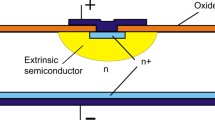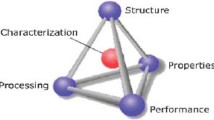Abstract
Because the scientific method is based on and observation, measurement methodologies and techniques are critical advancement of science and technology. Direct measurement of physical properties, inferences from physical properties, are based on models of behavior. To reduce the possibility of erroneous measurement, a clear understanding of how a sensor translates properties into measured values is vital to advancing materials and process design. The linkage between the accepted models, sensor principles, and methods of measurement enables one to optimally choose a sensor technology. Opportunities for innovation and research are abundant in this field, with the trend toward micro- and nano-sized integrated systems being especially notable.
Similar content being viewed by others
References
W. Gopel, J. Hesse, and J.N. Zemel, ed., Sensors: A Comprehensive Survey, vols. 1-9 (New York: VCH Publishers, 1985-1995).
IEEE Spectrum (May 1994), pp. 20-31.
H. Helvajian and E.Y. Robinson, “Micro- and Nanotechnology for Space Systems: An Initial Evaluation,” The Aerospace Corp Report No. ATR-93(8349)-1 (1993).
Mehran Mehregany and C. Bang, “MEMS for Smart Structures” Proceedings of the SPIE Conference on Smart Structures and Materials (Bellingham, WA: SPIE, 1995).
Expanding the Vision of Sensor Materials (Washington, D.C.: National Materials Advisory Board, National Academy Press, 1995).
R. Ciureanu and S. Middelhoek, Thin Film Resistive Sensors (Bristol, U.K: Institute of Physics Publishing, 1992), chapter 1.
Julian W. Gardner, Microsensors Principles and Applications (New York: John Wiley & Sons, 1994).
John Staley, “Platinum Thin Film Next-Generation Micromachined Sensors,” Sensors (April 1996), pp. 56–62.
Vital Technologies Corp, 670 Hardwick Road, Unit 4, Bolton, Ontario, Canada.
J.F. Nye, Physical Properties of Crystals (Oxford, UK: Clarendon Press/Oxford University Press, 1989).
E. Hartmann, An Introduction to Crystal Physics, International Union of Crystallography (Cardiff, U.K: Cardiff Press, 1984).
D.R. Lovitt, Tensor Properties of Crystals (Bristol, U.K: Institute of Physics Publishing, 1989).
G.K. Hubler, “Pulsed Laser Deposition,” MRS Bulletin, 17 (2) (1992), pp. 26–29.
S.J.P. Laube and E.F. Stark, Proc. Symp. Artificial Intel. Real Time Contr. (Valencia, Spain, 3–5 October 1994), p. 159; and Oxford, U.K.: International Federation of Automatic Control, Elsevier Science, Ltd.).
E.F. Stark and S.J.P. Laube, JMEPEG, 2 (1993), pp. 721–726.
J. Fraden, AIP Handbook of Modern Sensors (New York: American Institute of Physics, 1993).
A.G. Jackson and S.J.P. Laube, private communication (1996).
H. Fischbeck and K. Fischbeck, Formulas, Facts and Constants (New York: Springer-Verlag, 1987).
Author information
Authors and Affiliations
Rights and permissions
About this article
Cite this article
Jackson, A.G., Laube, S.J.P. & Busbee, J. Sensor principles and methods for measuring physical properties. JOM 48, 16–23 (1996). https://doi.org/10.1007/BF03223067
Issue Date:
DOI: https://doi.org/10.1007/BF03223067




